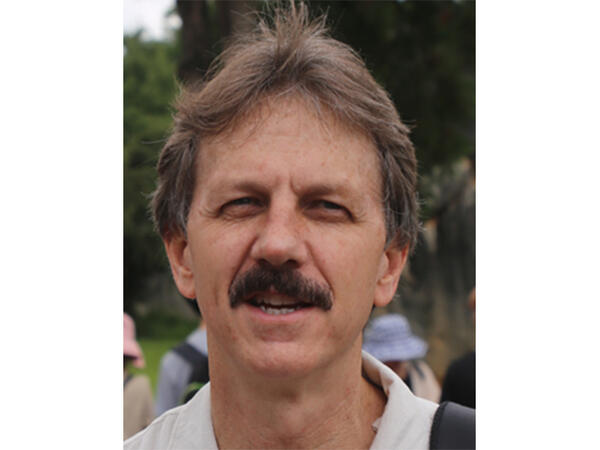
Jeffrey
Henderson
144 College Street
Toronto ON M5S 3M2
Canada
Area of Research
Jeff Henderson’s research focuses on the molecular mechanisms governing programmed cell death (PCD) pathways in the mammalian brain (CNS) and stem cells for both normal and pathologic states: mechanisms of neural connectivity in the CNS relating to Eph-family tyrosine kinases and development and delivery of small molecule therapeutics targeting these processes.
Research Challenge
Programmed cell death: During development and following many forms of normal and pathologic injury states, cells are eliminated through a process known as programmed cell death (PCD). PCD processes such as apoptosis, necroptosis and macro-autophagy thus play a critical role in controlling death in both acute injury states such as spinal cord injury and stroke as well as neurodegenerative diseases including Parkinson’s and Huntington and Alzheimer’s disease. Abnormal PCD also occurs in a wide array of human cancers. Understanding the molecular mechanisms regulating PCD is therefore critical to enhancing recovery from these states. The laboratory is discovering new molecular interactions regulating both normal and pathologic PCD signaling, identifying key protein-protein interactors which can be targeted by small molecule therapeutics.
Axon guidance: Meaningful functional recovery of the injured central nervous system requires both continued neuronal survival and appropriate re-innervation of injured neural targets. To better understand the process of axon guidance during development and following CNS injury, we are examining a group of axon guidance molecules known as the EphB family. We have previously demonstrated that these receptor tyrosine kinases play a key role in regulating the organized innervation of several targets of the CNS, as well as being critical regulators of dynamic neural remodeling. We are attempting to understand the role which EphB receptors play in regulating several novel features of motor and sensory function in the CNS.
Molecular Therapeutics: Through the use of stem cell mediated CRISPR gene targeting, the role which specific interactors play in stem cell and neural signaling process can determined in vivo and in vitro. Over the past decade our investigations have allowed us to identify molecular interactions which regulate specific forms of neural cell death. By modifying target proteins in vivo in stem cells we can assess the dynamic features of this in PCD in real time following injury. Using such methods we have developed high-throughput assays to screen the ability of thousands of small biomolecules to influence specific elements of these pathways, identifying agents capable of altering the specific aspects of PCD in vivo. We have also developed several new methods to efficiently modify primary stem cells in a scale-independent manner.
Proposed Solution
Biologics and small molecules capable of modifying programmed cell death are presently an area of intense clinical interest in the treatment of an array of neurodegenerative disorders, stroke and spinal cord injury, as well as a variety of cancers for the reasons outlined above. Using gene modification techniques combined with sensitive real-time imaging techniques we are unraveling the core principles of programmed cell death in both normal and pathologic states. We and others have shown that modification of these pathways, at least at the genetic level, can substantially reduces the level of injury in the CNS, and dramatically enhance death response to even treatment-resistant cancers. Using cell modification on the whole-animal, ex vivo and single cell level, we are identifying key molecular interactors, we are using gene modification to first determine the functional effects of candidate modification for proteins/miRNAs of interest. Identification, high-throughput screening of small molecule candidates is performed. To enhance CNS delivery of therapeutics the laboratory collaborates with that of Dr. S. Wu for development of appropriate nanoparticle agents were required.
Impact to date
The Henderson laboratory provided the first demonstration of role of Bcl-2 in regulating gamma motor survival in vivo; the first demonstration of the role of cytochrome C in regulating motor neuron cell death following injury in vivo; first demonstration of the role of Smac/DIABLO in tuning levels of PCD execution in vivo; he developed the first high resolution combined 3D MRI/CT surgical atlases of the murine cranium for strains 129S1/SvImJ and C57Bl/6J; demonstrated the role EphB2 and EphA4 receptors play in regulating formation of the principle inter-hemispheric tracts of the mammalian forebrain in vivo; provide first demonstration that EphB2 reverse signaling regulates learned opiate tolerance in vivo; identified the true mechanism of action for neuroprotective agents FK-506 and CsA in vivo; demonstrated the mechanism of excitatory neural signaling in regulating granule cell precursor survival in the cerebellum.
Recent work: With respect to PCD inhibition, the Henderson laboratory performed high-throughput PCD functional screening of 6300 GRAS small molecule inhibitors of Bax, identifying common signaling motif within the structurally diverse hits (IP filed). The Henderson laboratory also developed an improved cerebral ischemia / reperfusion injury model in mice (stroke), to identify causes of recent clinical drug failures. The laboratory has provided first demonstration of a unique regulatory interaction between apoptosis and necroptosis during CNS cerebral ischemia in vivo. They have provided the first demonstration of an absolute requirement for caspase-3 in regulating cisplatin-mediated cell death in vivo. On the technical front the laboratory has developed a low-cost ($100) open-source form of efficient microelectroporation appropriate for primary cells; and in conjunction with the laboratory of Dr. R. Macgregor provided the first demonstration of an entirely new scale-independent form of gene transduction for primary cells based upon application of hydrostatic pressure (IP filed).
Collaborative work: In collaboration with the laboratory of Dr. T. Mak, Henderson published the first description of the neuronal effects Traf-6 in vivo; with the laboratory Dr. T. Pawson he published the first description of the role of EphB family receptors in vivo and provided the first demonstration of the role which the intracellular adaptors ShcB and ShcC play in vivo in regulating CNS development. With the laboratories of Drs. T. Mak and R. Hakem they published the first in vivo description of the role of caspase-9, a central regulator of PCD. With the laboratories of Dr. S.X.Y. Wu and P. Frazer they have examined the neuroprotective and blood-brain barrier crossing properties of novel nanoparticles designed to treat Alzheimer’s disease.
Publications
Henderson laboratory publications
Keywords: mouse model, CNS, embryonic stem cells, cell death, CRISPR, transgenics, small molecules, programmed cell death, stroke, neural connectivity, axon guidance, gene transduction methods, stereotactic, microsurgical methods, neuroanatomy
